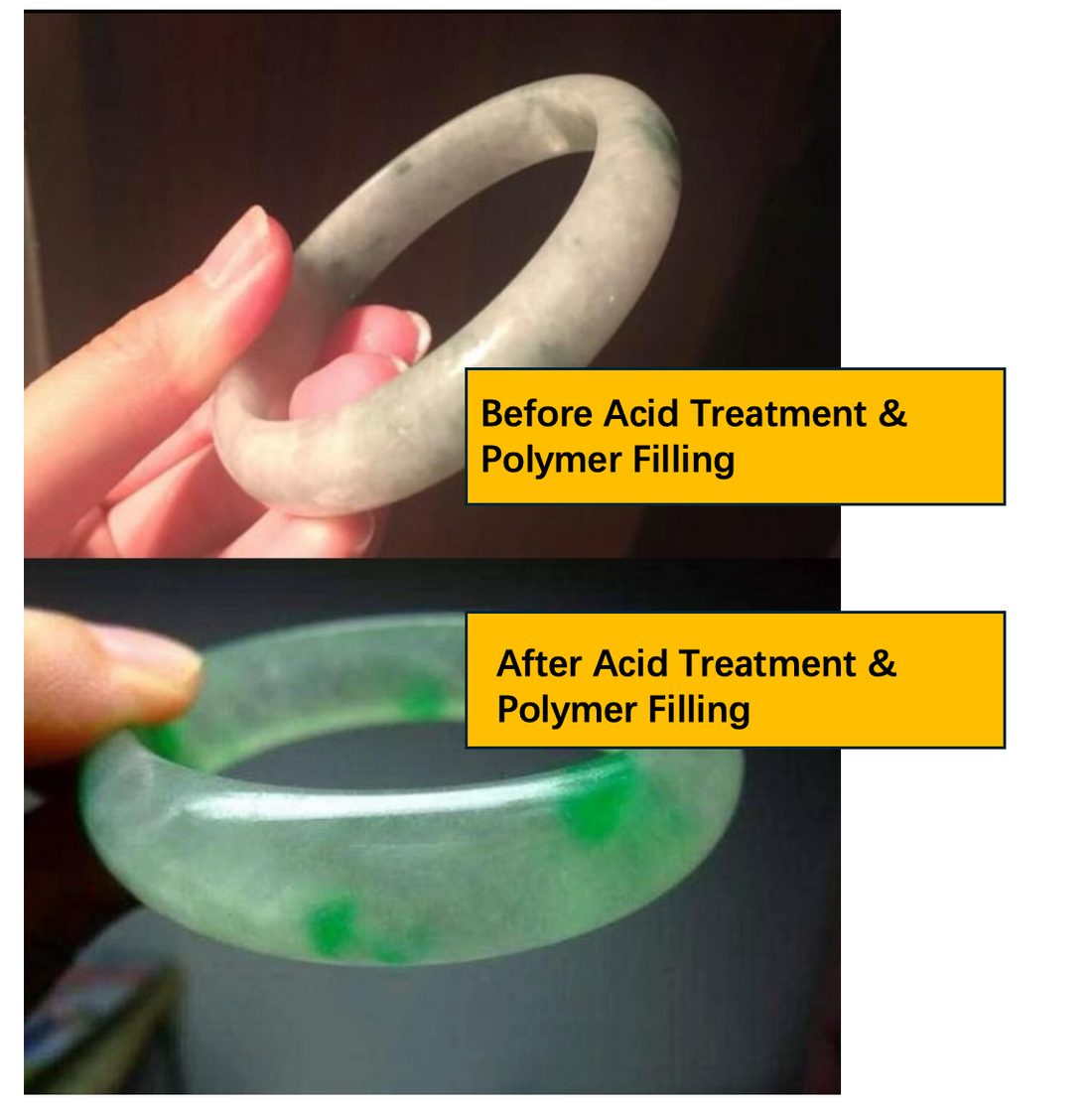
Why You Should Avoid Acid-Treated and Polymer-Filled Jadeite
💎 Introduction: The Illusion of Beauty
Not all jadeite is created equal. In today’s market, many seemingly “beautiful” jadeite pieces are in fact the result of chemical treatment—processed to appear flawless on the surface, while hiding structural damage underneath. These stones, commonly known as B-Grade jadeite, may look appealing, but they pose serious risks for buyers seeking value, safety, and authenticity.
🧪 What Is Acid-Treated and Polymer-Filled Jadeite?
Acid-treated jadeite, or Type B jadeite, undergoes an artificial enhancement process that alters its natural composition. Here’s how it works:
- Bleaching: The jadeite is soaked in strong acids to remove unwanted inclusions, iron stains, and discoloration.
- Filling: After bleaching, the porous and weakened structure is injected with polymer resins or plastic to restore transparency and gloss.
While this process may improve the stone’s appearance in the short term, it results in a product that is no longer geologically stable—or truly “jade.”
⚠️ Why You Should Avoid It
1. Structural Instability
The acid process dissolves key silicate bonds within the jadeite crystal lattice, leaving it soft, brittle, and fragile. It becomes prone to cracking, especially under pressure or during metal mounting.
2. Color Fading and Yellowing
The resins used to “repair” the stone degrade over time. Exposure to UV light, skin oils, or heat can cause:
- Yellowing
- Surface dullness
- Internal cloudiness
- This deterioration cannot be reversed.
3. Health Risks
Some low-grade polymer fillers may release toxic residues or irritants. Prolonged skin contact with poorly treated jadeite may cause allergic reactions or worse, especially if the piece is worn daily.
4. No Investment Value
B-Grade jadeite has no resale or collector value. It will never be accepted by reputable auction houses or collectors. It is considered decorative, not precious.
🔍 How Can You Tell?
Without laboratory equipment, detecting B-Grade jadeite is difficult. However, signs may include:
- Excessive gloss with a “plastic” feel
- Hollow or muffled sound when tapped
- Surface bubbles under magnification
For certainty, professional testing such as infrared spectroscopy or Raman analysis is required.
✅ Our Commitment: 100% Natural, Certified Jadeite
At TATHATĀ, we commit to offering only Type A jadeite—natural, untreated, and ethically sourced. Every piece is backed by trusted lab certification and our professional expertise.
We believe in conscious beauty—choosing not just what looks good, but what is true, lasting, and worthy of reverence.
